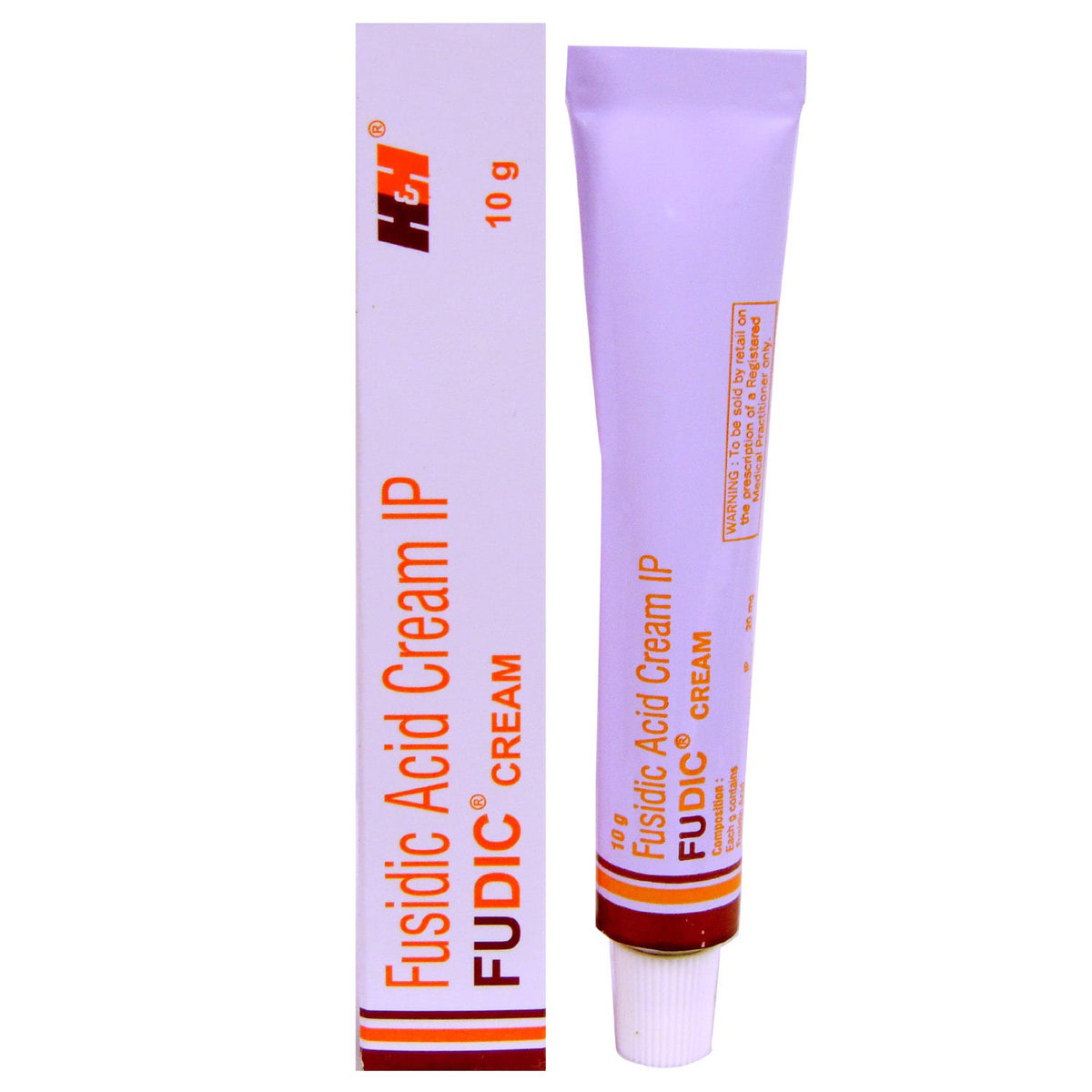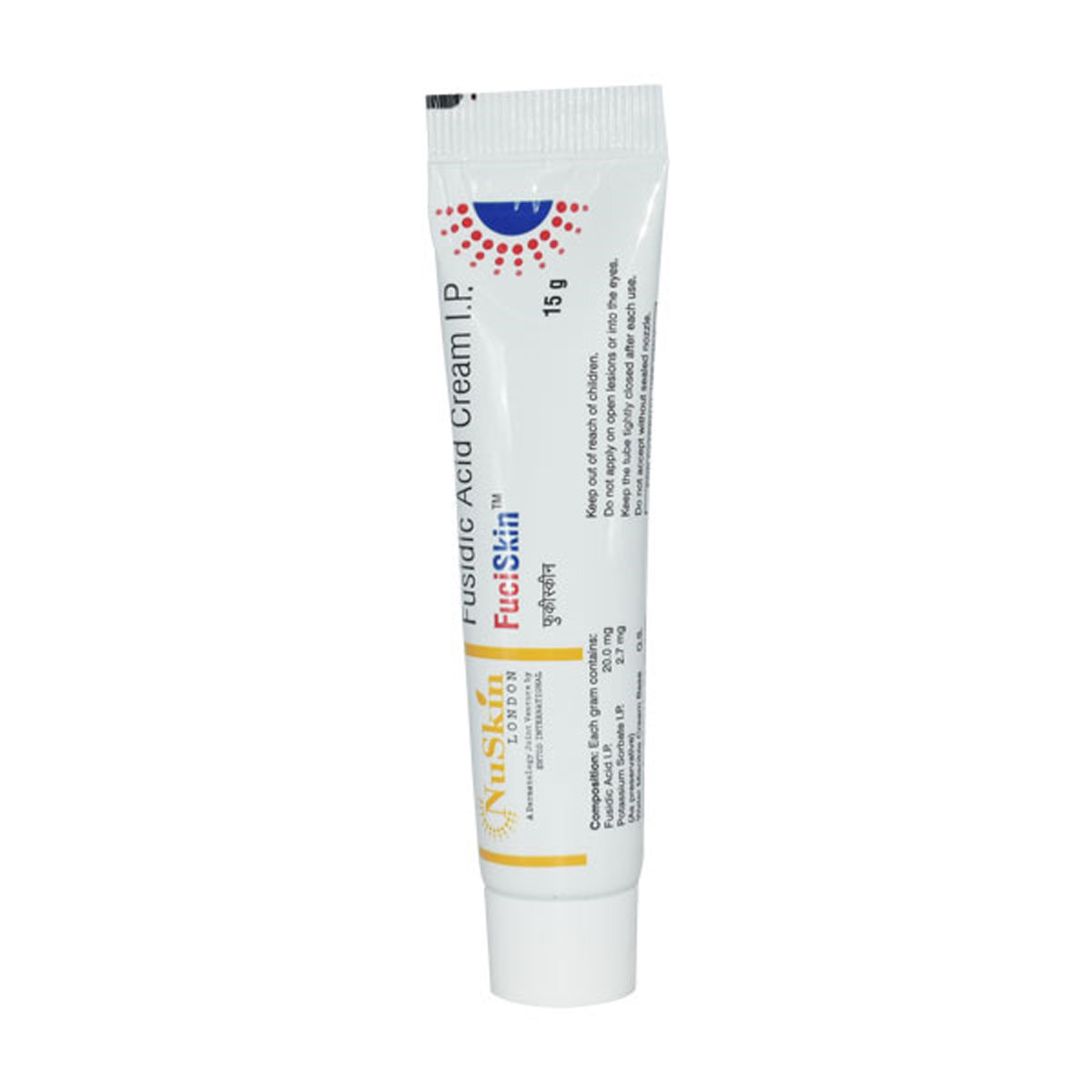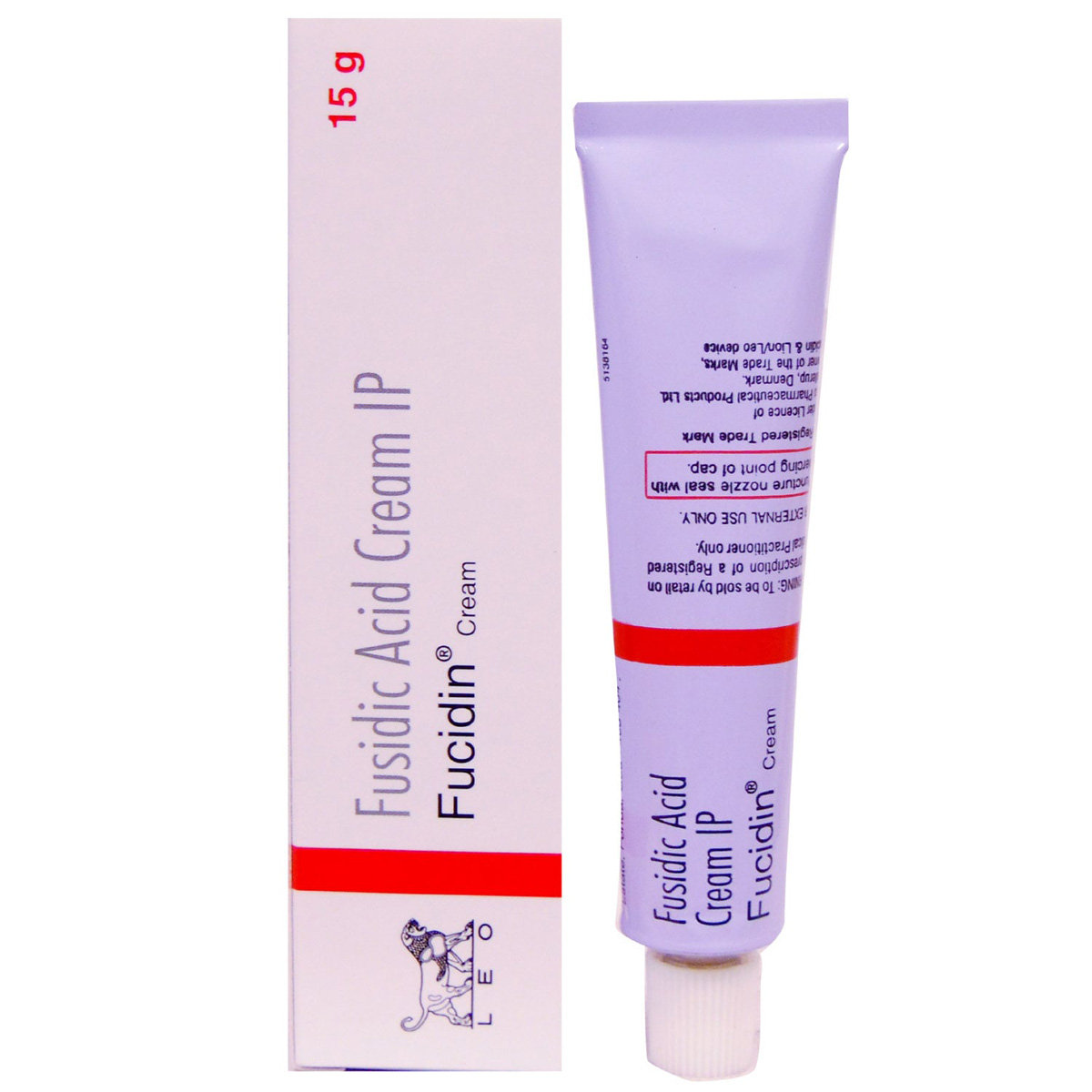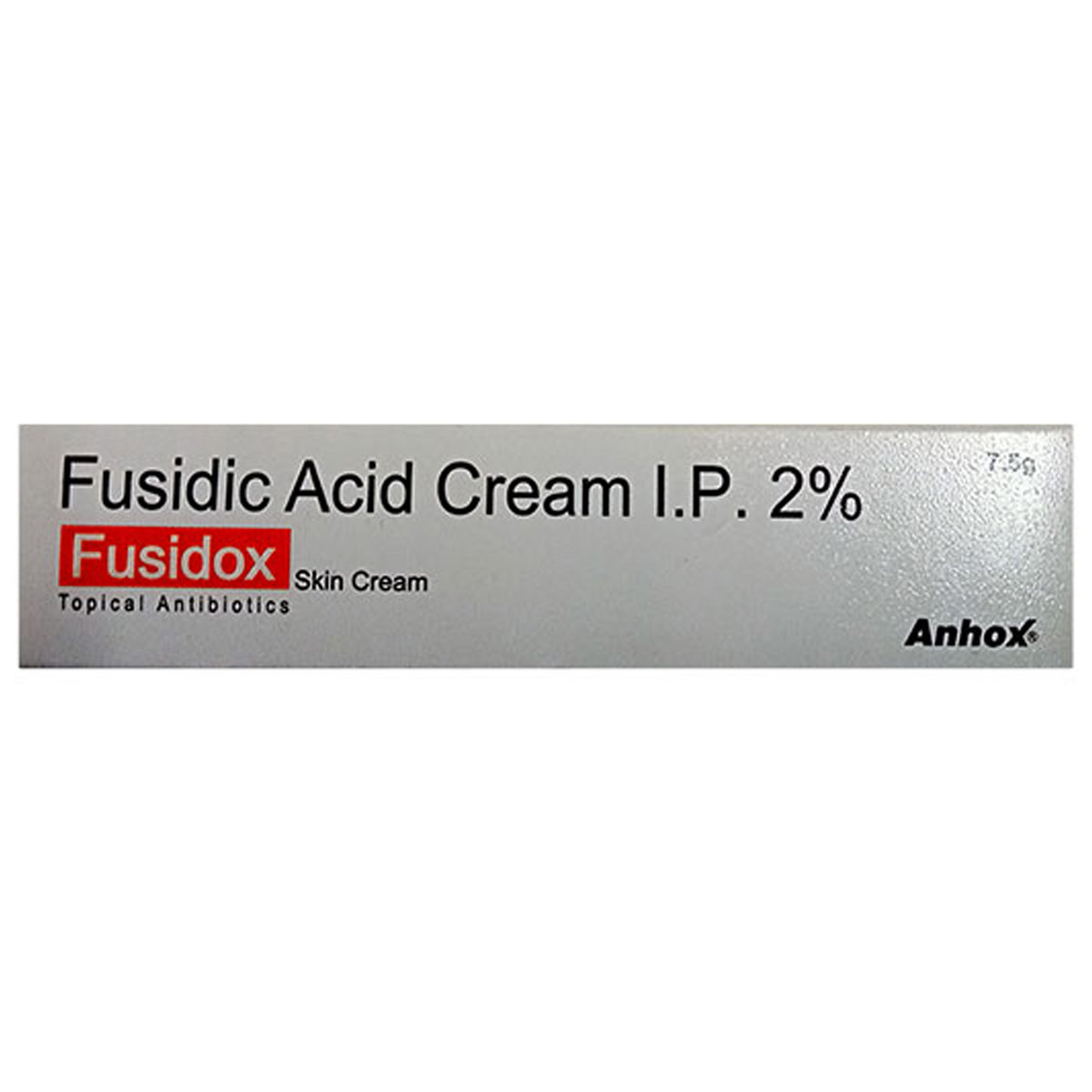Fuseal Cream

MRP ₹96.5
(Inclusive of all Taxes)
₹14.5 Cashback (15%)
know your delivery time
Provide Delivery Location
Composition :
Manufacturer/Marketer :
Consume Type :
Expires on or after :
Return Policy :
Selected Pack Size:10 gm
10 gm ₹86.85
(₹8.69 per gm)
Out of stock
15 gm ₹154.5
(₹10.3 per gm)
In Stock

Secure Payment

Trusted by 8 Crore Indians

Genuine Products
Therapeutic Class
Country of origin
Manufacturer/Marketer address
Author Details
We provide you with authentic, trustworthy and relevant information
Disclaimer
Alcohol
Safe if prescribed
Interaction of alcohol with Fuseal Cream is unknown. Please consult a doctor before consuming alcohol while using Fuseal Cream.
Pregnancy
Consult your doctor
Please consult your doctor. Fuseal Cream is given to pregnant women only if the doctor thinks the benefits outweigh the risks.
Breast Feeding
Consult your doctor
Do not apply Fuseal Cream on the breast. However, if you have any concerns regarding the use of Fuseal Cream if you are a breastfeeding mother, please consult a doctor.
Driving
Safe if prescribed
Fuseal Cream usually does not affect your ability to drive or operate machinery.
Liver
Consult your doctor
If you have any concerns regarding use of Fuseal Cream in patients with liver problems, please consult a doctor.
Kidney
Consult your doctor
If you have any concerns regarding use of Fuseal Cream in patients with kidney problems, please consult a doctor.
Children
Safe if prescribed
Fuseal Cream should be used with caution in children and in doses as prescribed by a doctor only.
Product Substitutes
Reference
- https://www.nhs.uk/medicines/fusidic-acid/
- http://mcs.open.ac.uk/nlg/old_projects/pills/corpus/PIL/data/Leo/Fucidin_Cream/Fucidin_Cream.html
- https://www.hpra.ie/img/uploaded/swedocuments/2134753.PPA1328_024_001.0bf5d01b-5a17-4dd2-87a3-74cc3aa638c6.000001Product%20Leaflet%20Approved.130823.pdf
- https://www.medsafe.govt.nz/Consumers/cmi/d/DPFusidicAcidCream.pdf
- https://www.medicines.org.uk/emc/product/3364/pil#gref
About Fuseal Cream
Fuseal Cream belongs to a class of drugs called antibiotics used to treat infections of the skin such as impetigo (a weeping, crusty and swollen patch of skin), cellulitis (swelling, redness, and pain in the infected area), infected cuts, burns, wounds, grazes, abrasions, ulcers, boils, abscesses, spots, carbuncles (cluster of boils), infected eczema and infected contact dermatitis (inflammation of the skin).
Fuseal Cream contains Fusidic acid, an antibiotic that works by inhibiting the production of essential proteins that are necessary for bacteria to grow and multiply. Thereby, it stops the growth of bacteria without killing them directly. Then the bacteria eventually die, or the immune system destroys them and clears the infection.
Fuseal Cream is for external use only. Use Fuseal Cream as prescribed by your doctor. You are advised to use Fuseal Cream for as long as your doctor has prescribed it based on your medical condition. In some cases, you may experience irritation or itching at the site of the application. Most of these side effects of Fuseal Cream do not require medical attention and gradually resolve over time. However, if the side effects persist or worsen, please consult your doctor.
If you are allergic to fusidic acid, other topical antibiotics, or any other ingredients, do not use Fuseal Cream. Avoid smoking or going near naked flames as the fabric (bedding, clothing, dressings) that is in contact with Fuseal Cream may catch fire and burn easily. If you are pregnant or breastfeeding, please inform your doctor before using Fuseal Cream. Do not apply Fuseal Cream in large amounts or use for a long time than prescribed as it does not give quick or better results but increases the risk of side effects, antibiotic resistance and makes skin more sensitive to Fuseal Cream.
Uses of Fuseal Cream
Medicinal Benefits Mweb
Key Benefits
Fuseal Cream is an antibiotic used to treat infections of the skin such as impetigo (a weeping, crusty and swollen patch of skin), cellulitis (swelling, redness, and pain in the infected area), infected cuts, burns, wounds, grazes, abrasions, ulcers, boils, abscesses, spots, carbuncles (cluster of boils), infected eczema and infected contact dermatitis (inflammation of the skin). Fuseal Cream works by inhibiting the production of essential proteins that are necessary for bacteria to grow, and multiply. Thereby, it stops the growth of bacteria without killing them directly. Then the bacteria eventually die, or the immune system destroys them and clears the infection. Also, Fuseal Cream is used to treat folliculitis (inflammation of one or more hair follicles), paronychia (infection of the tissue surrounding a fingernail or toenail), erythrasma (infection with brown, scaly skin patches, especially in the folds of the body) and sycosis barbae (infection of the bearded skin).
Directions for Use
Side Effects of Fuseal Cream
- Irritation or itching at the site of the application
Drug Warnings
If you are allergic to fusidic acid, other topical antibiotics or any other ingredients, do not use Fuseal Cream. Avoid smoking or going near naked flames as the fabric (bedding, clothing, dressings) that is in contact with Fuseal Cream may catch fire and burn easily which is a serious fire hazard. If you are pregnant or breastfeeding, please inform your doctor before using Fuseal Cream. Do not apply Fuseal Cream in large amounts or use for a long time than prescribed as it does not give quick or better results but increases the risk of side effects, antibiotic resistance and makes skin more sensitive to Fuseal Cream.
Drug-Drug Interactions
Drug-Drug Interactions
Login/Sign Up
Drug-Food Interactions
Drug-Food Interactions
Login/Sign Up
Drug-Diseases Interactions
Drug-Diseases Interactions
Login/Sign Up
Habit Forming
Special Advise
- You are advised to apply any other lotions, creams or ointments including cosmetics and moisturizers after 30 minutes of applying Fuseal Cream as using both at the same time may reduce the effectiveness of Fuseal Cream.
Diet & Lifestyle Advise
- Wash your hands regularly and properly.
- Wash cuts, scrapes, wounds, or insect bites right away.
- Cover any skin infections with a bandage after cleaning and drying the skin.
- Avoid skin-to-skin contact with the person having a skin infection.
- Throw away the used gloves and bandages in the garbage.
- Avoid sharing items such as towels, bar soap, razors, clothes, or toys.
- Clean any shared bedding or toys.
All Substitutes & Brand Comparisons
RX
Out of StockDicfu 20mg Cream
Nidus Pharma Pvt Ltd
₹75
(₹6.75/ 1gm)
22% CHEAPERRX
Out of StockFusic Cream
West Coast Pharmaceuticals Pvt Ltd
₹95
(₹8.55/ 1gm)
1% CHEAPERRX
Fudic Cream 10 gm
Hegde & Hegde Pharmaceutica Llp
₹103
(₹9.06/ 1gm)
4% COSTLIER

Have a query?
Buy best Dermatology products by
Glenmark Pharmaceuticals Ltd
Sun Pharmaceutical Industries Ltd
Klm Laboratories Pvt Ltd
Cipla Ltd
Canixa Life Sciences Pvt Ltd
Abbott India Ltd
Ajanta Pharma Ltd
Intas Pharmaceuticals Ltd
Dr Reddy's Laboratories Ltd
East West Pharma India Pvt Ltd
Alkem Laboratories Ltd
Atopic laboratories Pvt Ltd
Hegde & Hegde Pharmaceutica Llp
Brinton Pharmaceuticals Ltd
Torrent Pharmaceuticals Ltd
Amwill Healthcare Pvt Ltd
Leeford Healthcare Ltd
Palsons Derma Pvt Ltd
Oaknet Healthcare Pvt Ltd
Med Manor Organics Pvt Ltd
Micro Labs Ltd
Dermocare Laboratories Gujarat Llp
Fixderma India Pvt Ltd
Apex Laboratories Pvt Ltd
Mankind Pharma Pvt Ltd
Ipca Laboratories Ltd
Yaher Pharma
Systopic Laboratories Pvt Ltd
Menarini India Pvt Ltd
Ethinext Pharma
Nemus Pharmaceuticals Pvt Ltd
Skinocean Pharmaceuticals
Dermacia Healthcare
Inex Medicaments Pvt Ltd
Lupin Ltd
GlaxoSmithKline Pharmaceuticals Ltd
Talent India Pvt Ltd
Zydus Cadila
Kivi Labs Ltd
Zydus Healthcare Ltd
Hbc Dermiza Healthcare Pvt Ltd
Mrhm Pharma Pvt Ltd
Regaliz Medicare Ltd
Sol Derma Pharmaceuticals Pvt Ltd
Newtrimed Healthcare Pvt Ltd
Wallace Pharmaceuticals Pvt Ltd
Eskon Pharma
Glowderma Lab Pvt Ltd
La Pristine Bioceuticals Pvt Ltd
Mohrish Pharmaceuticals Pvt Ltd
Percos India Pvt Ltd
Rockmed Pharma Pvt Ltd
Macleods Pharmaceuticals Ltd
Praise Pharma
Ethicare Remedies Pvt Ltd
Kaizen Drugs Pvt Ltd
Aurel Biolife
Rely On Pharmaceuticals
Wockhardt Ltd
Galcare Pharmaceuticals Pvt Ltd
Elder Pharmaceuticals Ltd
Indiabulls Pharmaceuticals Pvt Ltd
La Med Healthcare Pvt Ltd
Biocute Life Care
Yap Bioceuticals
Yash Pharma Laboratories Pvt Ltd
Zee Laboratories Ltd
Apple Therapeutics Pvt Ltd
Adonis Laboratories Pvt Ltd
Albatross Healthcare Pvt Ltd
Galderma India Pvt Ltd
Prism Life Sciences Ltd
FDC Ltd
Alniche Life Sciences Pvt Ltd
Salve Pharmaceuticals Pvt Ltd
West Coast Pharmaceuticals Pvt Ltd
Dermarex HealthCare India Pvt Ltd
Arka Vital Science Pvt Ltd
Dermajoint India
Gary Pharmaceuticals Pvt Ltd
Grace Derma Healthcare Pvt Ltd
Karlin Pharmaceuticals & Exports Pvt Ltd
Skinska Pharmaceutica Pvt Ltd
Uniza Healthcare Llp
Alembic Pharmaceuticals Ltd
Cadila Healthcare Ltd
Cadila Pharmaceuticals Ltd
Cosmofix Technovation Pvt Ltd
Human Pharmaceuticals
Indolands Pharma Pvt Ltd
Lyra Laboratories Pvt Ltd
Akumentis Healthcare Ltd
Entod Pharmaceuticals Ltd
Iceberg Health Care Pvt Ltd
Jenburkt Pharmaceuticals Ltd
P and P Dermaceuticals Pvt Ltd
Dabur India Ltd
Indchemie Health Specialities Pvt Ltd
Olcare Laboratories Pvt Ltd
Unison Pharmaceuticals Pvt Ltd
BODY CREAM
Body Lotion
Face Cream
Shampoo
Sun Screen
Face Gel
Soap
Face Wash
HAIR SOLUTION
Face Serum
BODY GEL
Hair Lotion
Hair Serum
Dusting Powder
ANTISEPTIC
FACE CLEANSER
Face Lotion
Body Wash
Body Spray
Eye Cream
FUNGAL INFECTION
Foot Cream
Conditioner
Eye Gel
Cleanser
Hair Cream
Hair Oil
Face Mask
Hair Gel
Sanitizer
Hair Spray
Moisturiser
Skin Ointment
Lip Balm
Capsule
Eye Serum
Intimate Wash
Specialty Supplements
Hand Cream
Facial Spray
SPECIALITY SUPPLEMENT
Face Toner
MEDICATED SHAMPOO
Tablet
Talcum Powder
BABY SUNSCREEN
Body Butter
Body Scrub
DIAPER RASH CREAM
EYE SOLUTION
FACIAL WIPE
Gargle
Hand Wash
Intimate Spray
Lip Serum
Lubricant Gel
MEDICATED CREAM
Nail Polish
VITAMIN D











